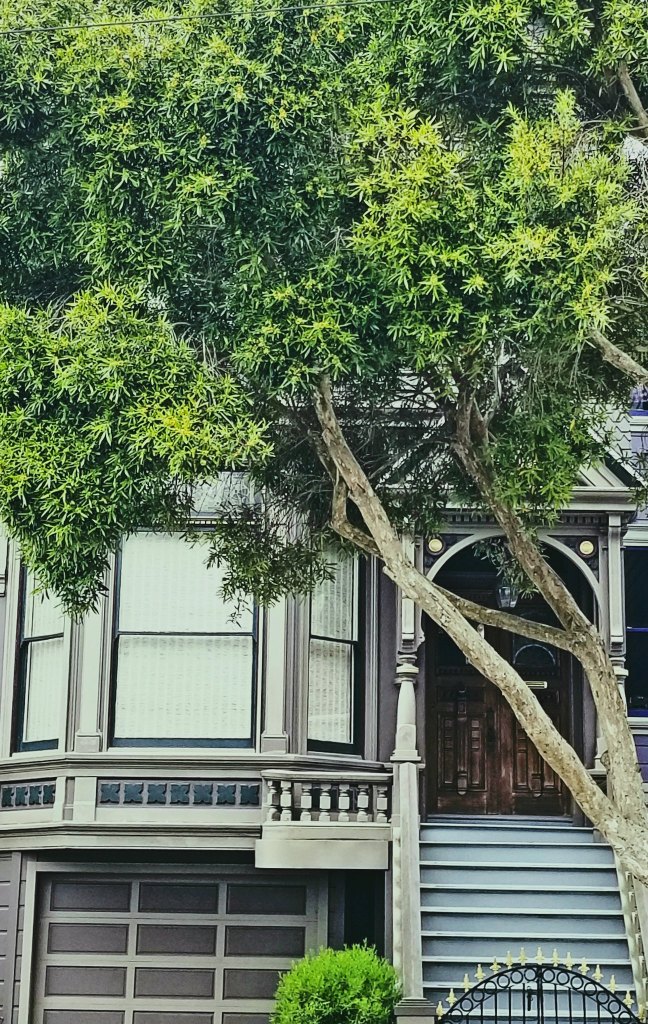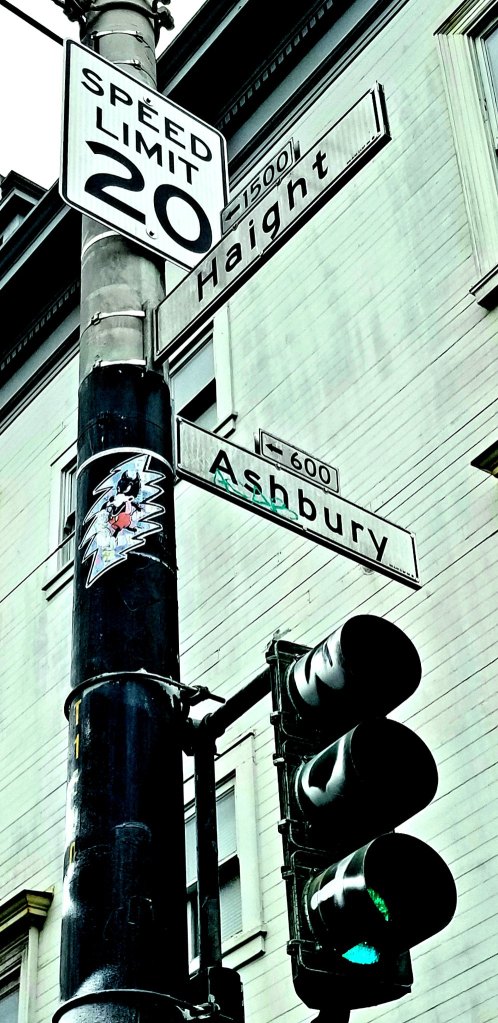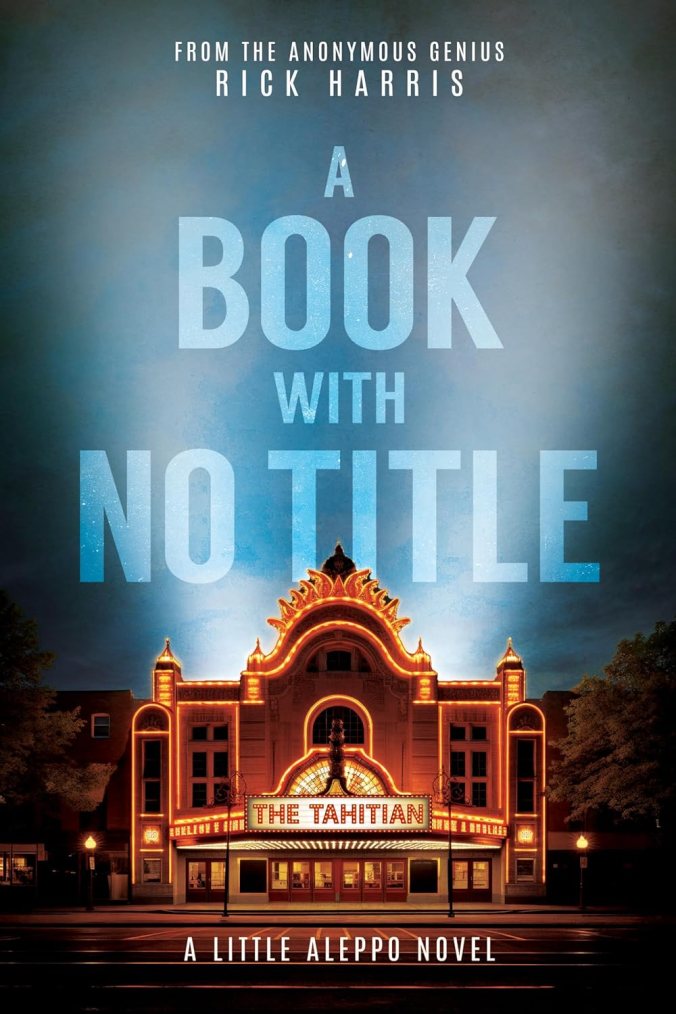Note: For an index of all articles in all three Favorite Songs series, click here, then scroll down.
Who They Were: An iconic and influential band formed in 1965 in the San Francisco Bay area by Jerry Garcia (guitar), Bob Weir (guitar), Phil Lesh (bass), Bill Kreutzmann (drums), and Ron “Pigpen” McKernan (keys); all of the members sang except for Kreutzmann. Lyricist Robert Hunter and drummer Mickey Hart joined the group by 1967, with keyboardist Tom Constanten serving a two-year stint in the late ’60s as well. The group’s founders had worked together in various configurations as Mother McCree’s Uptown Jug Champions, The Wildwood Boys, and The Warlocks, with their first live performance under the Grateful Dead moniker occurring at one of Ken Kesey’s Acid Tests in late 1965. The Dead quickly cemented their place as a cornerstone concert draw within the emergent West Coast counter-culture, and their communal house in the Haight-Ashbury neighborhood served as a media-friendly hub for the “Summer of Love” and its ancillary hippie migrations to the Bay Area. I’ve visited that site, of course:
From their earliest days, the group’s repertoire merged innovative cover songs with unique originals, all presented in an extraordinary improvisational style, with set lists and song structures routinely morphing on the fly as the group followed their collaborative muse. Pigpen was the group’s original front-man, but by the time of his death in 1973 of liver disease, he had been largely shifted to a support role, during the early ’70s period when Mickey Hart had left the band for a few years. Keith and Donna Godchaux joined on keys and vocals, lasting until 1979, when they were replaced by Brent Mydland. Keith Godchaux died in 1980 in an auto accident, and Mydland died of his an overdose in 1990. His replacement was former Tubes/Todd Rundgren collaborator Vince Welnick (supplemented by Bruce Hornsby in his early years), who committed suicide in 1996, completing the tragic “Hot Seat” run of unfortunate Grateful Dead keyboardists.
By the time of Welnick’s passing, the Dead were no more, as venerable front-man and ostensible driving soul of the group, Jerry Garcia, had died in 1995. Over the group’s 30-year run, they had but one charting single (“Touch of Grey” in 1987), but they were perennially one of the world’s top-grossing live acts, and their lasting legend is largely based on those shows, and the scenes and iconography that grew up around them. The Dead were also pioneers in encouraging the taping and trading of their live performances, making their ~2,300-show concert history one of the most well-documented in modern American musical history. Various configurations of the surviving Grateful Dead members have toured together since 1998 under a variety of names, including The Other Ones, The Dead, Furthur, and currently Dead & Company (with Weir and Hart), who we caught live last month at the Sphere in Las Vegas, an utterly exceptional concert experience, reviewed here.
When I First Heard Them: I can usually answer this question for most groups covered in this series in a clear and precise fashion, but I can’t do so for the Dead. I had heard of them and was aware of their iconic visuals by the early ’70s, but they didn’t appear on pop radio at the time, so I suspect it would have been the mid-’70s when I first heard them, likely on Long Island’s then-magnificent free-form radio station, WLIR. I am pretty sure the first album of theirs that I heard in full was the live Europe ’72, borrowed from Nassau Community College’s lending library, as was the case with so many other things I discovered in those days and still love. I know the first one I actually bought was Terrapin Station (1977), after which I got increasingly interested in the group’s history and back catalog. I first saw them live in 1979 at Nassau Coliseum, catching one of the last of the Keith and Donna shows early in the year, and then one of the first Brent shows around Hallowe’en season. As much as I loved them, I never embarked on the stereotypical Deadhead pursuit of following them around the country as a priority, in part because I didn’t have the means to do so, and in part because I’ve never really been a musical monoculture guy, prioritizing one artist above all others. But I deeply value the memories of the several shows that I did catch, and I’ve enjoyed all of the post-Dead outings that I’ve been able to attend as well.
Why I Love Them: I’ve been active in a certain UK-based musical community for 20-some years, and we’ve often discussed and debated the differences between American and English music. I’ve posited there and elsewhere that if I was asked to select but one artist to best represent what “American Music” was in the rock era (say, post-1954), I would unquestionably and confidently select the Grateful Dead. They developed a live repertoire of some 450 unique songs over their long concert history, effectively touching on pretty much every musical genre or idiom of import in our Nation’s musical history: blues, country, jazz, folk, rock, reggae, disco, experimental, psychedelic, gospel, disco, world music, whatever, you name it, they did it, and they did it well. I have no doubt that if Jerry had lived longer, they would have figured out a way to integrate hip-hop and modern pop into their mix, not diluting their essence in any way by doing so, but taking the defining tropes of those idioms and making them their own, as they always did. If the ideals of our Nation are based on it being a cultural melting pot, then the Grateful Dead provided a true musical manifestation of those ideals, in always surprising and innovative ways.
On a non-musical front, I’m also deeply fond of the role that the late Robert Hunter (who died in 2019) played with the group, an integral non-performing member of the ensemble at large, whose magnificent poetry anchored almost all of their best songs. (Hunter usually wrote with Garcia; Weir later developed a similar writing partnership with John Perry Barlow, whose lyrics don’t move me as much, I’m sorry to say). At this junction in my life, if I could have any job in the world, I think I’d want Robert Hunter’s: that non-playing, but dedicated, lyrical role with a major musical act, who brought his moving and magical and impressionistic words to anthemic life, over and over and over again. I have had some of my words recorded by others, and it’s a great feeling hearing them that way. I can’t imagine how marvelous it would feel to make a living doing that!
There’s also a community and communal element to the Grateful Dead experience that is rich and powerful and meaningful, and which I appreciate deeply, even if I was not personally embedded within it in the same deep ways that others of my acquaintance once were. That aspect of the group’s appeal was brought home to me in the most magnificent fashion from about 2012 to 2021 via Thoughts on the Dead, the most extraordinary fan site I’ve ever encountered, related to any artist, ever. The schtick there, as TotD defined it, was this: “My thesis is that the Grateful Dead were the Silliest Band in the World. I will attempt to prove this through misquotes, malicious lies, and just plumb crazy talk; everything in these pages is, of course, satire.” It seems like a one-skit sort of premise, but in the hands of a brilliant writer like Rick Harris (the late and much lamented creator of the site), it rose to epic levels of creativity, and connected or reconnected me to a variety of folks in the greater circus of Dead fandom. And as I was writing this piece, I went to the TotD site to see what year it started, and was utterly tickled to discover that Rick’s online novel, A Book With No Title, is now available in print format, courtesy the creator’s brother. Here’s a eulogy that I wrote for TotD after Rick’s untimely death from cancer; in that piece, I note (as I had noted elsewhere, earlier), that I consider A Book With No Title to be (My) Best Book of the 21st Century. No lie, no exaggeration, and nothing has changed since 2017 to alter that deeply-held and sincere opinion. Click on the cover below to order your own copy, and to learn what really happened to the Dead’s epic Wall of Sound stage rig after it was retired in 1974. (Just don’t call him WALLY).
Before I present my Top Ten Dead Cuts below, I must explain the logic behind my choices and the samples I’m embedding with this article. The Dead’s studio and live performances are littered with covers, many of which are rightfully seen as signature elements of their canon, but I’ve elected to select only those songs written by members of the Dead, specifically for the group. (A number of live favorites in the group’s concert catalog originated on solo studio albums by Weir, Garcia, and Hart). I’ve also elected to link to the studio versions of my selected songs, which I know a lot of Deadheads would consider heretical. While the quality of the studio albums varied widely over the years, I’m quite fond of some of them, and consider them to be classics, hands down, no argument. I also don’t wish to go down the rabbit-hole of arguments about which is the best live “Althea,” or which “Dark Star” was the most magnificent, or about whether “Scarlet Begonias” and “Fire on the Mountain” should be considered separately, or as “Scarlet > Fire,” as they were often performed live. This series focuses on songs, not performances, so I give you these studio renditions, and if you love them, I encourage you to explore further to find your very own best live versions of any or all of them. (I suspect that many readers here already have strong opinions on such matters).
#10. “U.S. Blues,” from From the Mars Hotel (1974)
#9. “Mountains of the Moon,” from Aoxomoxoa (1969)
#8. “Cumberland Blues,” from Workingman’s Dead (1970)
#7. “Althea,” from Go to Heaven (1980)
#6. “Box of Rain,” from American Beauty (1970)
#5. “Uncle John’s Band,” from Workingman’s Dead (1970)
#4. “Friend of the Devil,” from American Beauty (1970)
#3. “New Speedway Boogie,” from Workingman’s Dead (1970)
#2. “Brokedown Palace,” from American Beauty (1970)
#1. “That’s It For the Other One,” from Anthem of the Sun (1968)



Pingback: What’s Up in the Neighborhood, June 22 2024 – Chuck The Writer
I saw some iteration of the Dead, with the Godchaux couple. Ah, it was the Jerry Garcia Band in New Paltz https://jgmf.blogspot.com/2014/02/ln-jg1977-11-29jgballaud.html
I liked the Dead well enough, but Deadheads in New Paltz, my alma mater, were EXHAUSTING. I’m very fond of a Dead cover album called Deadicated
LikeLike
Jerry was a busy man, always with the gigs, Dead or not!
LikeLike
And so the internet and the Social Media once again lead me to your writings J.E.S
Great work, keep it up,
LikeLike
Thanks most kindly, it’s great to see you here, or anywhere else!!!
LikeLike